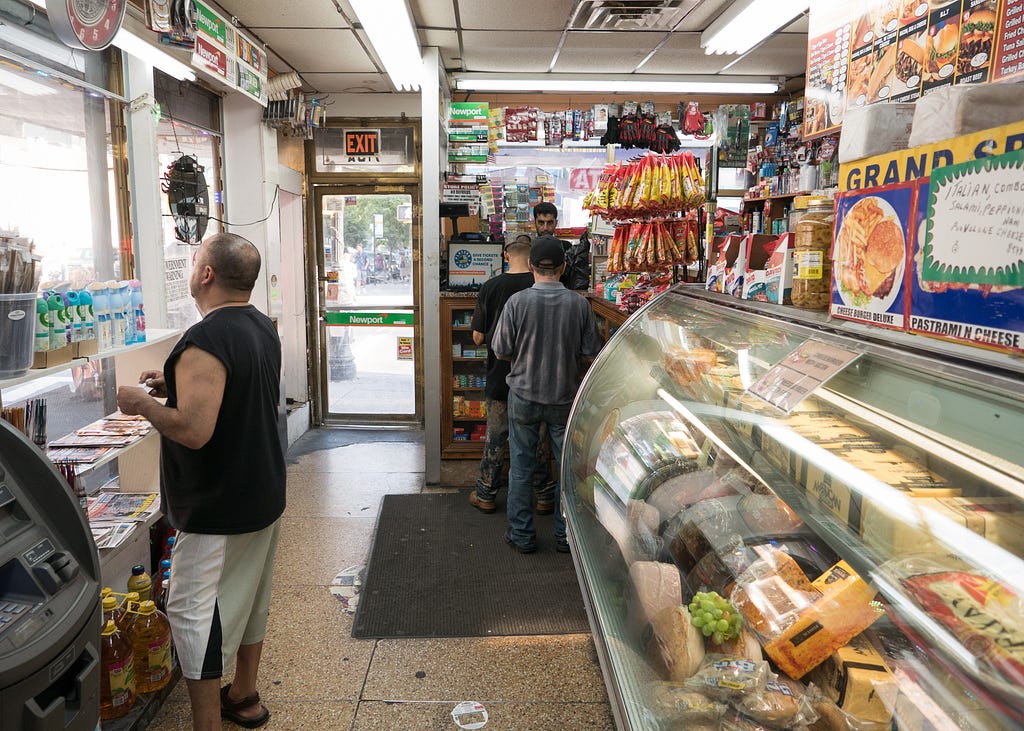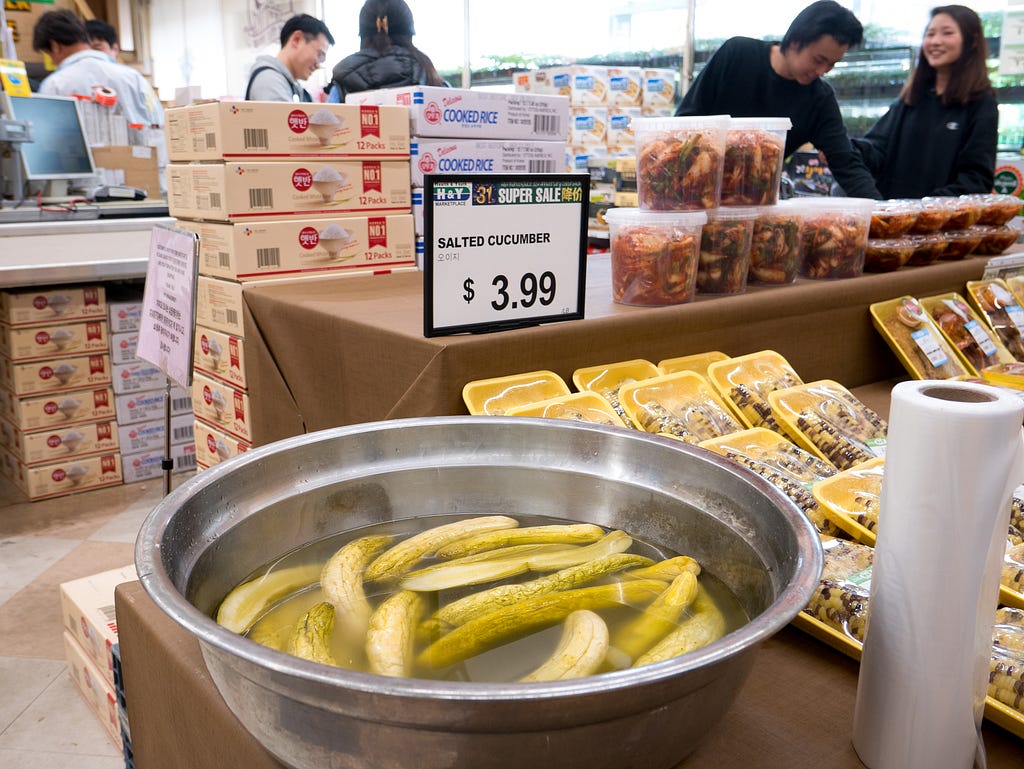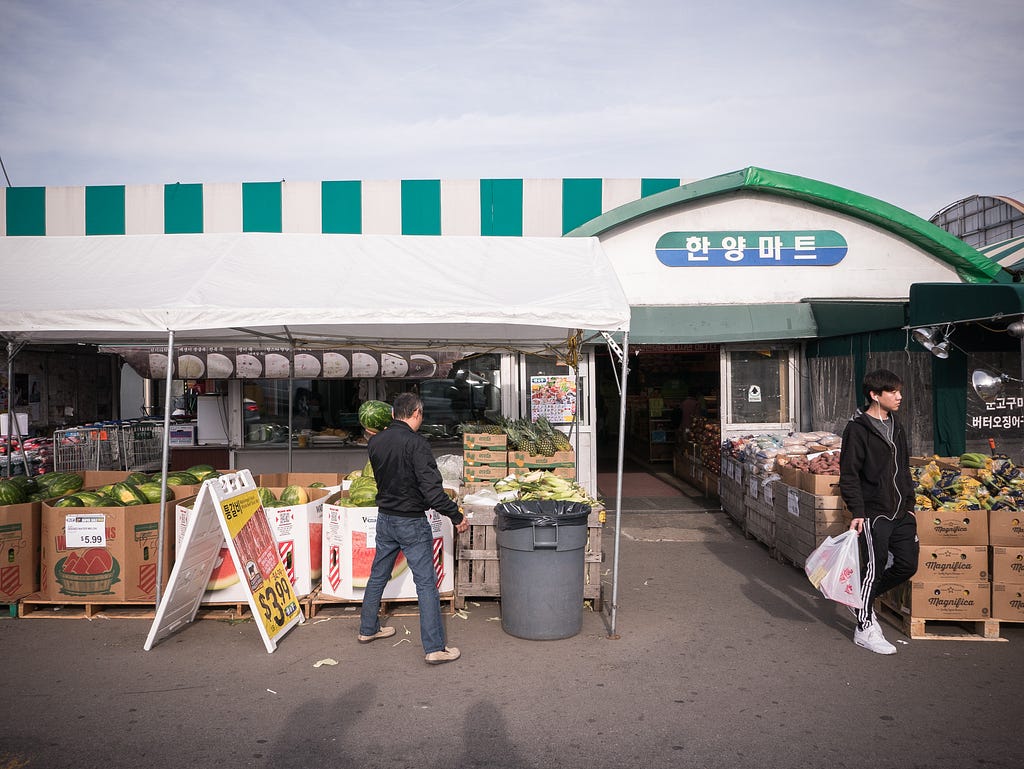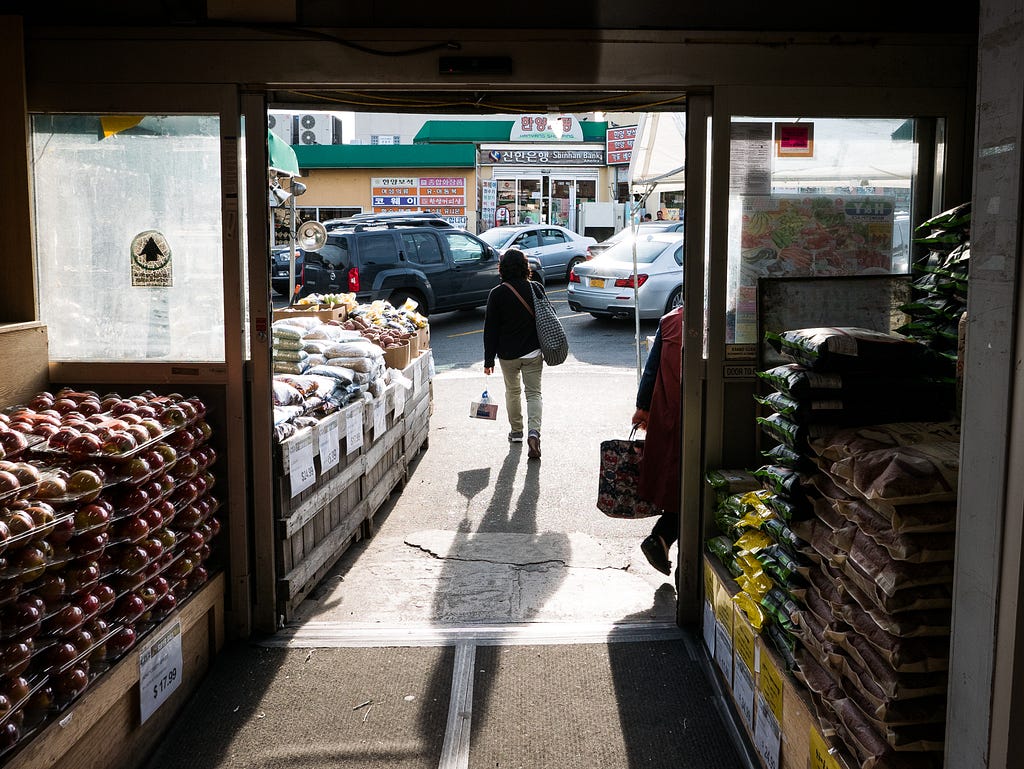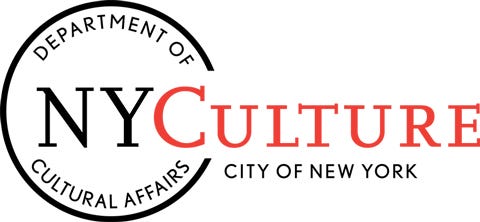the bodega project
New York City, Seen Through Its Bodegas
This summer, ten authors will explore their changing neighborhoods for The Bodega Project
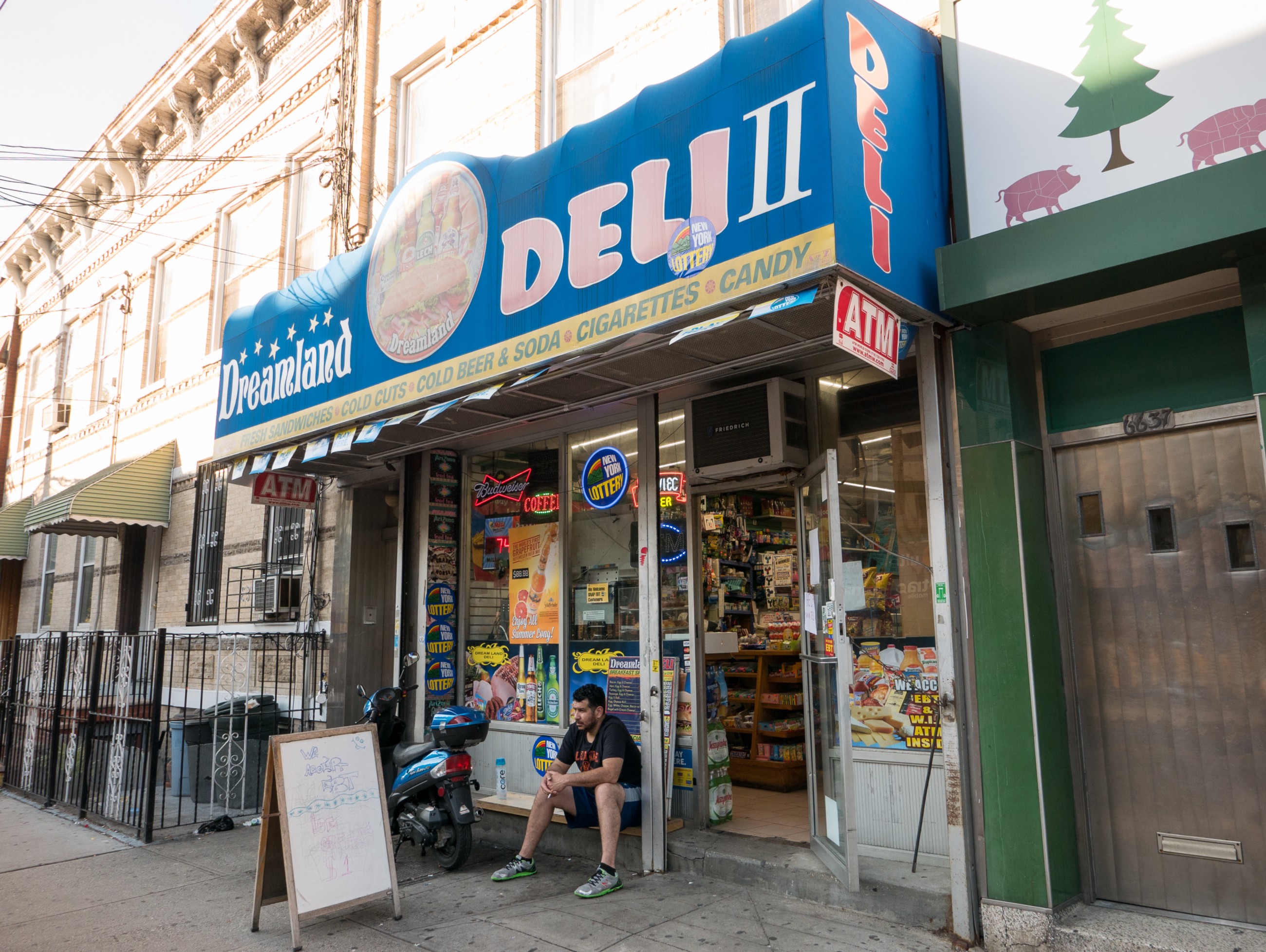
Introducing The Bodega Project, a new summer-long series from Electric Literature, in partnership with the New York City Department of Cultural Affairs. Each week, one of ten authors from across the five boroughs will reflect on their community through that most relied-on and overlooked of New York institutions, the bodega.
For a city that prides itself on never sleeping and never shutting down, it was an unfamiliar and disorienting sight, on a Thursday in February, to find so many metal shutters closed on street corners all over New York. A week prior, President Trump had signed an executive order effectively denying anyone from Iran, Iraq, Libya, Somalia, Sudan, Syria, or Yemen entry into the United States. Now, helicopters wavered above Cadman Plaza in downtown Brooklyn, while on the steps of Borough Hall a boisterous crowd chanted “USA! Yemen!” and blew into vuvuzelas. For the first time in history New York City’s bodegas were collectively on strike. Across the five boroughs, it was suddenly impossible not to be aware of their absence, and impossible to accept the idea of a city without them.
These ubiquitous corner stores have been open and operating, in one form or another, for almost as long as there’s been a city to host them. In the past there were Lower Manhattan’s numerous Jewish delis, the Italian alimentari on Mott Street, and the greengrocers that established themselves north of Union Square. After World War II — following an influx of immigrants from the Caribbean, particularly from Puerto Rico — the shop’s modern iteration came into being. It was then given the nickname that most New Yorkers know it by today, regardless of the neighborhood, the ethnicity of its owners, or the signage that looks out to the street.
At its most essential, the bodega is the shop on the corner that stays open late and sells whatever you need — the place where you go in a pinch to pick up milk, a can of Bustelo, an egg and cheese on a roll, or a scratch card when you’re feeling lucky. For the average New Yorker it’s something that goes beyond mere capitalism: it is the beating heart of the neighborhood, a place of ethnic and economic diversity, the center of cultural rather than just monetary exchange.
Wrapped up as they are, no contemporary history of the city would be complete without an examination of the bodega. In Justo A. Martí’s photographs from the 1950s, of Latin American bodegas in New York’s Puerto Rican barrios, it’s possible to see a larger reflection of the new metropolis that was then taking shape. In the bad old days of the seventies and eighties — when heatwaves and blackouts marred the summers, crime rates spiked, and panicked suburban “white flight” kicked off in earnest — the city’s bodegas were a lifeline, struggling to keep produce coming in and bread stocked on the shelves. The earliest hip-hop could be heard busting from speakers outside corner delis in the Bronx, at the same time as The Ramones were fueling up on Slim Jim’s, plantains, and Miller beer from a shop on Bowery and East 4th. It’s not just New York’s history either. To look at any of the contemporary forces shaping the city — whether it’s gentrification, immigration, or economic inequality — one often doesn’t have to go further than to the shop on the corner.
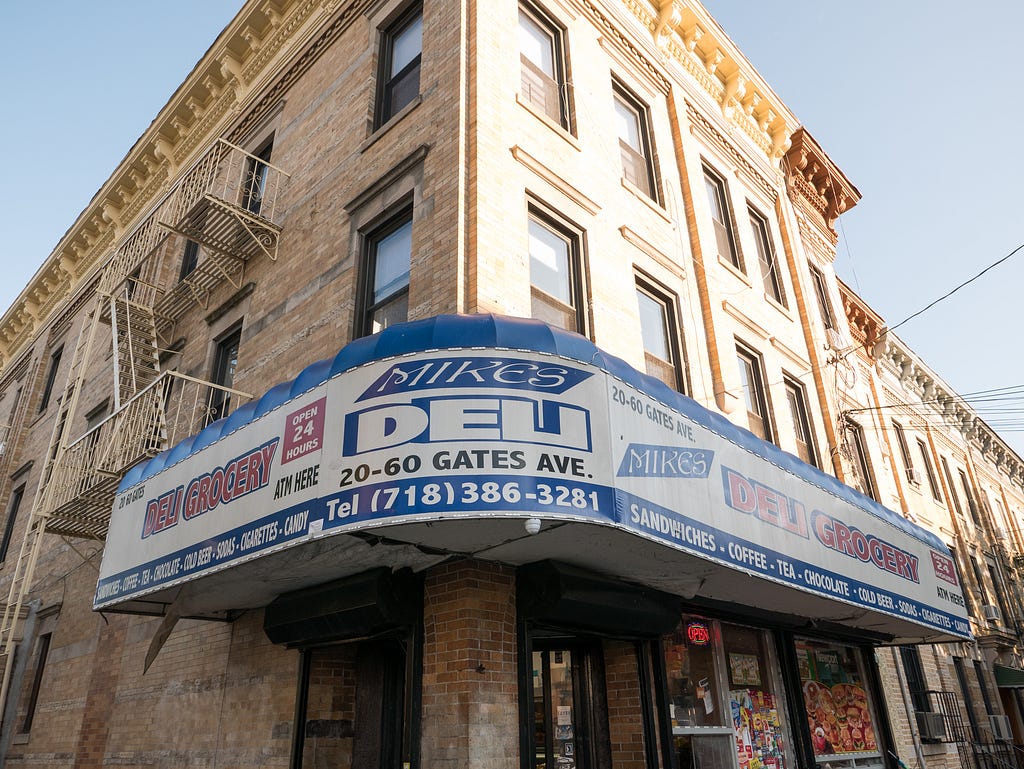
In New York, neighborhoods can practically be defined by their bodegas. Whether the windows are decorated with international calling cards, saints cards, Knicks gear, or cured meats will tell you something about who the locals are and how they live. Bodegas are where almost all paths in a neighborhood cross, where you can hear almost any language, a place that is romantically unromantic. Open all the time and always reliable, they tend to go unnoticed, until — as on that Thursday in February — you experience the city in their absence.
Over the course of the summer Electric Literature will be bringing you ten essays over ten weeks on bodegas and communities from across the city — brand new writing by New York lifers, transplants, immigrants, and exiles — published each Friday starting today. For some of these authors the bodega will serve as a backdrop; for others it will be the key to finding their place in this city. They’ll talk to store workers and regulars, plumb memories, chart changes in the neighborhood, and be privy to stories. Some names and sites will be familiar to you, others will be new. In the end we hope to give you a snapshot of a city that is always evolving and always open.
Welcome to The Bodega Project.
— Anu Jindal and Dwyer Murphy, Electric Literature
Read the first installment of The Bodega Project here, an essay by Charlie Vázquez on his childhood community of Pelham Parkway in the Bronx.
A Cultural Oasis Inside a Bronx Bodega
